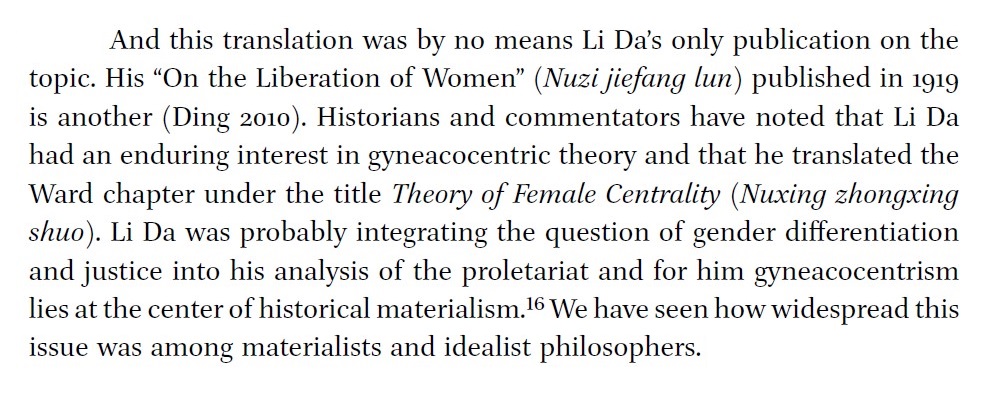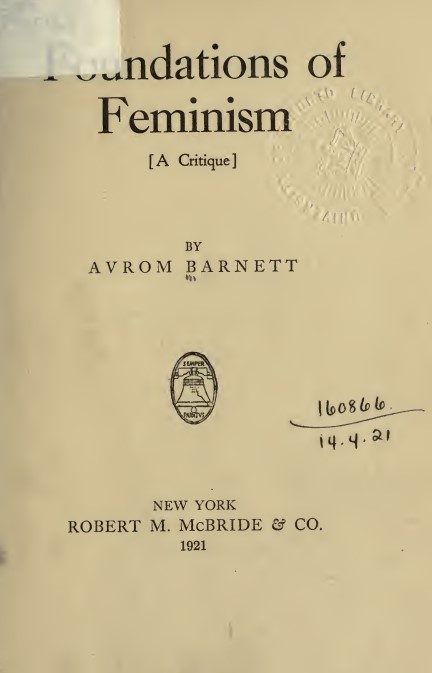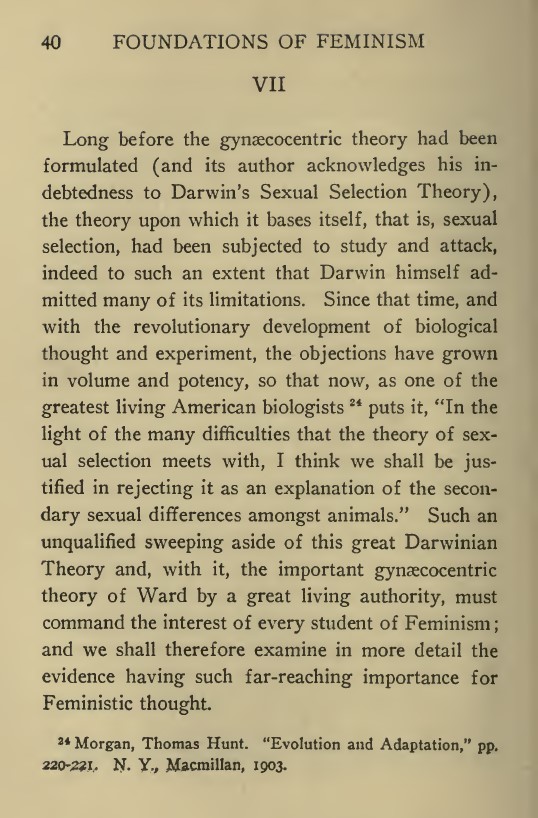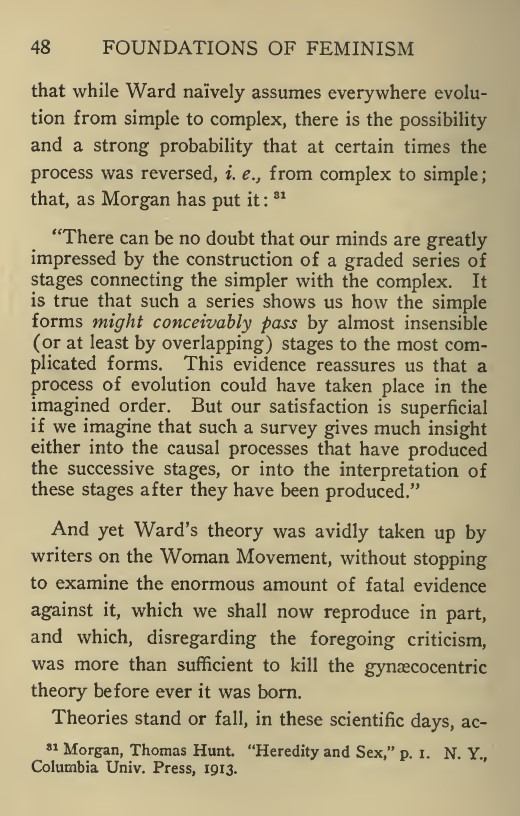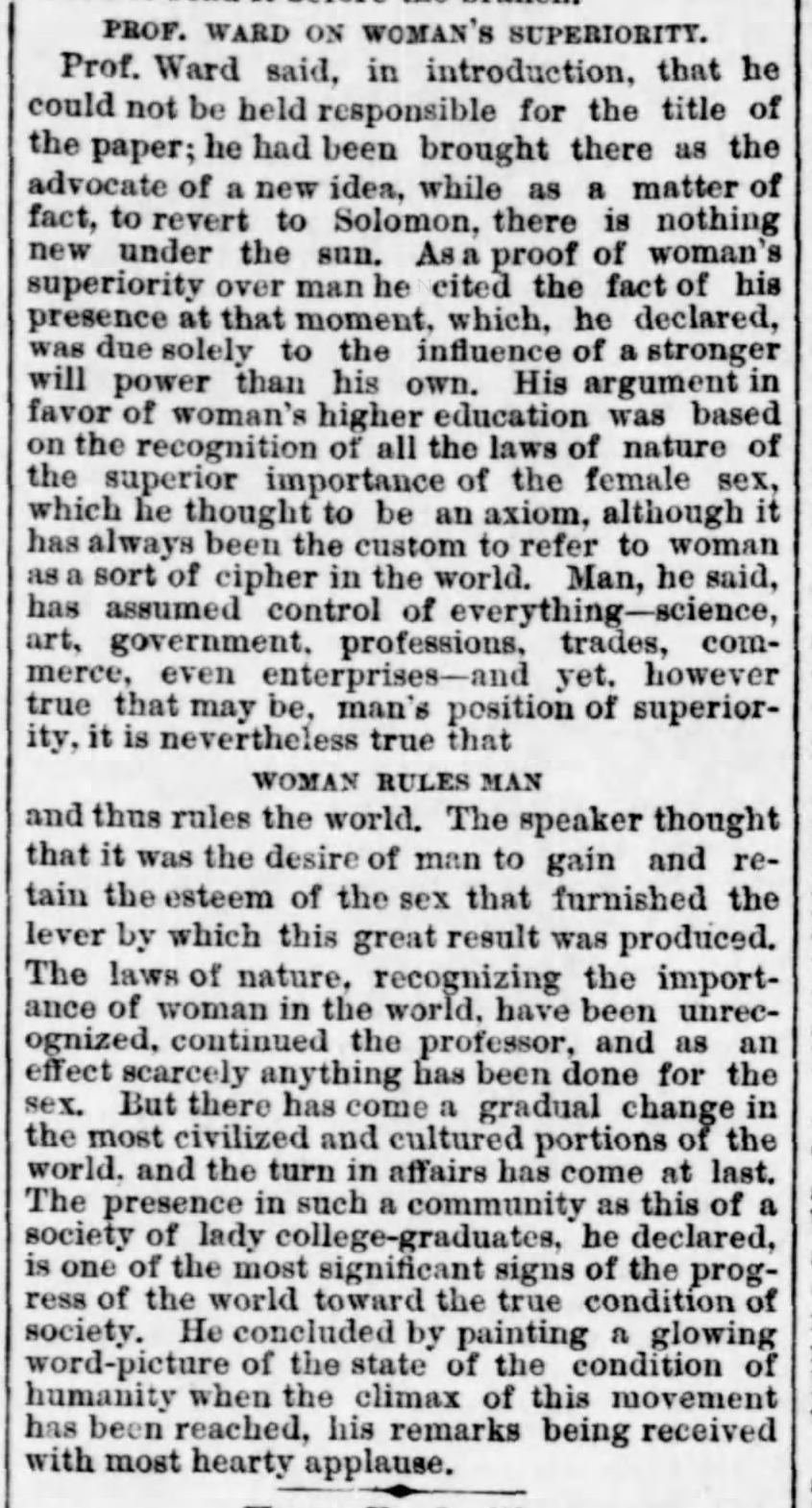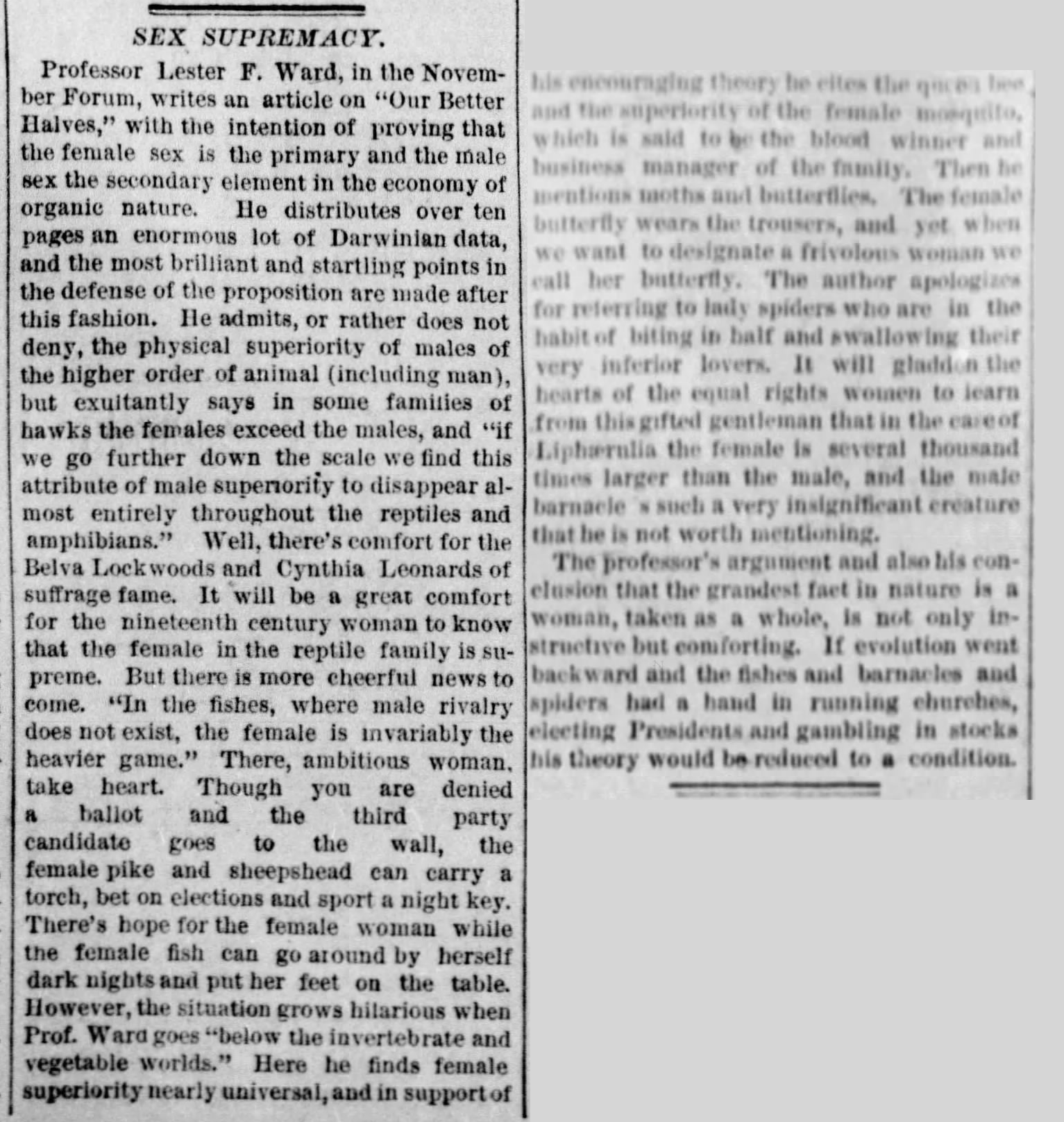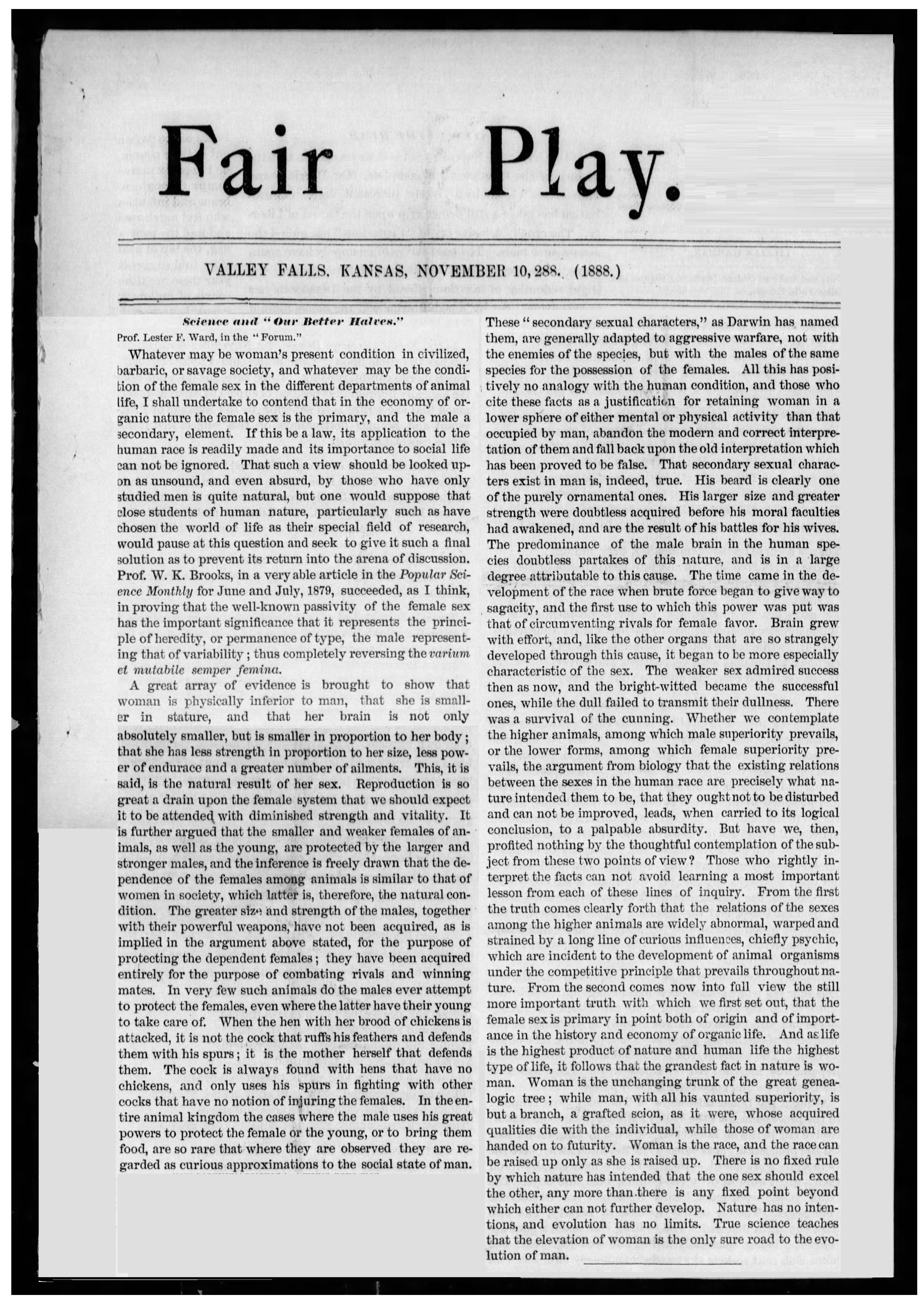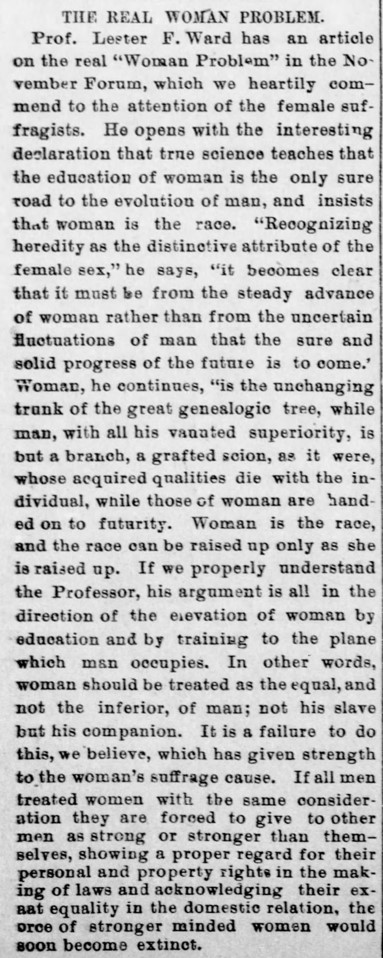The following is an excerpt from a 1921 book Foundations Of Feminism which pairs early feminism with the belief that women are biologically superior to males, and thus more important to the human species. This, as previously mentioned, is a forerunner to contemporary appeals to evolutionary psychology making similar conclusions about women’s biological superiority.
The Natural Gynocentrism Fallacy
The natural gynocentrism fallacy, otherwise known as bio-gynocentrism, is a centuries old mythology first promoted in feminist circles, and subsequently to mass culture under the guise of science. Below is a selection of writings elaborating on this fallacy.
– The ‘Natural Gynocentrism Fallacy’ (Hanna Wallen)
– What’s in a suffix? taking a look at the meaning of gyno–centrism (Peter Wright)
– Is Gynocentrism Adaptive? (Peter Ryan)
– Robert Briffault’s Law Doesn’t Apply to Humans (Peter Wright)
– Has the MRM Adopted a Gynocentric Ideology? (Peter Wright)
– ‘Biological Gynocentrism’: Falling Into The Feminist Trap? (Peter Wright)
– Lester Ward’s Gynocentrism & The Deification of Women (Peter Ryan)
– Eight Traits of the Bio-Gynocentrist (Vernon Meigs)
– Bio-gynocentrism: Turning Science Into Goddess Worship (Peter Ryan)
– Humans as a “Gynocentric Species” is Pure Myth (Peter Wright)
–Presumption Of Male Disposability Is Based On Flawed Hypothesis (Peter Wright)
Robert Briffault insisted his ‘law’ doesn’t apply to humans
We’ve all heard it before – the claim that we must accept gynocentrism as the default setting for the human species, and for human relationships, because Robert Briffault said it was true a century ago. The only problem is that he didn’t say that at all; its a fabrication by people who have attempted to con us into thinking gynocentrism is the incontrovertible basis of human existence.
Briffault’s law, as stated in his book The Mothers, is this:
“The female, not the male, determines all the conditions of the animal family. Where the female can derive no benefit from association with the male, no such association takes place.”1
Many have embraced Briffault’s Law and applied it to human relationships in a way that Briffault didn’t intend. Briffault applied his law strictly and explicitly to non-human animals in a chapter titled “The Herd And The Family Amongst Animals.”
In the section describing his ‘animal’ law he qualifies that, quote “There is, in fact, no analogy between the animal family and the patriarchal human family. The former is entirely the product of the female’s instincts, and she, not the male, is the head.”
The chapter is five pages long. In it he mentions tigers, elks, lions, zebras, gazelles, buffaloes, deer, monkeys, beavers, lions, birds and other animals, and only references humans briefly in order to contrast human behavioural patterns from those of animals. Briffault says:
“There is in fact no analogy between that [animal] group and the patriarchal human family; to equate the two is a proceeding for which there is no justification. The patriarchal family in the form in which it exists today is a juridic institution. Whatever external and superficial similarities there may be in the constitution of the human and of the animal family, there is one profound and fundamental difference. The patriarchal family is founded upon the supremacy of the male as ‘pater familias,’ as head of the family. This is not the case in the animal family. it is, on the contrary, entirely the product and manifestation of the female’s instincts; she, and not the male, is its head. We may occasionally find the male employed in foraging for the brood and for the mother, while the latter is lying quiescent in charge of her eggs or brood; but there is nothing in those appearances to justify us in regarding the animal family as patriarchal; on the contrary, the conduct of the group is entirely determined not by the male but by the female.”1
Most of what Robert Briffault says is factually incorrect by today’s standard of knowledge. But what we can say without any doubt is that he never applied his “law” to humans. Therefore, let us apply Occam’s razor to this monumental con-job that has been disseminated in the manosphere and beyond.
While we are at it, why not apply the razor to all the other bogus arguments for natural gynocentrism; the people disseminating such unscientific rubbish are not genuinely interested in men’s liberation from the current status quo.
* * *
Has the MRM become a gynocentric ideology?
In 2013 I introduced the terms Men’s Human Rights Movement (MHRM) and Men’s Human Rights Advocacy (MHRA) to an audience devoted to men’s issues, and since that time the phrase has come to enjoy a small place in the lexicon.
MHRA was introduced partly to indicate a different slant/s to that of many traditional MRAs, of which the following are a few points (note, these are generalisations which don’t apply to all MRAs):
Another advantage of adding the word human in Men’s Human Rights Advocacy is it better qualifies that the rights being sought are human rights as differentiated from “patriarchal” or other rights, as imputed to the movement by feminists and other bad actors who wish to malign the movement.
The MRM has always been characterized by feminist critics as a regressive misogynist enterprise aiming for the revocation of women’s liberties and desiring women as property — i.e., to be “essentially barefoot, pregnant and chained to the kitchen.” This caricature has been generated by individuals who feel threatened by the more reasonable idea of men seeking to improve their lives.
Over the last decade the ‘MRM’ label has become increasingly identified with belief in natural gynocentrism, an ideology that views women as more important than men in the evolutionary scheme. Therefore the differences between MHRA and MRA can be summarized as advocacy for non-gynocentrism, vs. natural gynocentrism respectively: i.e., some MRAs see themselves as working within a natural gynocentric system to help men get a reasonable deal within its woman-centering parameters, whereas the MHRA position abandons the belief that humans must function within a bio-gynocentric system of relationships.
I’ve checked the science used by gynocentrism advocates and it’s thoroughly flawed; eg. Pretentious appeals to Robert Briffault and his non-existent ‘law’; the claim that humans are returning to hypothesised older layers of our genome shared with gynocentric gorillas and lions (pre Mutual Mate Choice models); or the claim that an increase in infanticide at the hands of women indicates they are evolutionarily more important than children or genes to successful reproduction. All of these arguments and more, including the examples of men going down on one knee to propose, or women’s hypergamy, can be better explained by a culturally driven rise of gynocentric narcissism.
Even the argument about women’s ova and wombs being sufficient for propagating the human species, with just a few men required as seed banks, is an unscientific fantasy of the narcissistic mind. Progeny of wombs stand little chance of survival without the infrastructure built by legions of men, even incel and bachelor men whose contributions to building infrastructure are equally vital for infant survival. We could say that men, collectively, are one giant paternal investment that would be unable to provide the necessary or reliable survival infrastructure if they were significantly reduced in numbers. What do we think would happen to world survival infrastructure today if the male population were reduced to 10% of the current number? Or perhaps halved to 50%? I would hope the answer to this is obvious.
The high numbers of people invested in these fallacies include narcissistically inclined women, male sycophants, politicians and grifting institutions. To check whether these believers are promoting the theory due to psychological capture, ask yourself if women promoting natural gynocentrism are showing any signs of narcissism? Equally, if a man promotes natural gynocentrism, ask yourself if he is showing any signs of trained sycophancy? These things are tells that we are dealing with maladaptive rather than adaptive behaviors.
Perhaps we could put it this way: does “gynocentric MRA” sound like an oxymoron to you? It should. Because it is. And on that basis that I find myself more reluctant to use the label, though I should underline that I speak for no one but myself. Put more simply, I cannot in good conscience support gynocentrism as a cornerstone of a men’s movement – that would be like accepting the married state is essential to living the MGTOW life.
I note that not all MRAs “believe” in the natural gynocentrism theory, even as many do, but a sufficient majority has influenced the understanding of how far we should take Men’s Rights Advocacy before infringing on supposedly sacrosanct models of bio-gynocentrism.
Lastly, I appreciate the many MRAs who care about or have pity for men and boys – this is not an attempt to dismiss their positive contributions nor an attempt to create needless division. The above thoughts are long percolated, and I share them only on the offchance that it makes some small difference in the narrative – perhaps being of assistance to a few men and women who are seeking a way out of the maze of Victorian era myths of gender.
See also:
Ward’s Gynæcocentrism Theory & Marxism
The following are a few items showing Marxist interest in Ward’s Gynæcocentrism Theory.
1. The following article was published in Justice, 1909. Note the reference to Lester F. Ward’s ‘Gynocentric theory’.

2. Li Da (1890–1966) was a Chinese Marxist philosopher who had a great influence on Mao Zedong. He began his career translating Lester F. Ward’s “Gynæcocentric Theory,” which appeared in Ward’s book Pure Sociology (1903). The following quote is from Howard Chiang’s book The Making of the Human Sciences in China.
